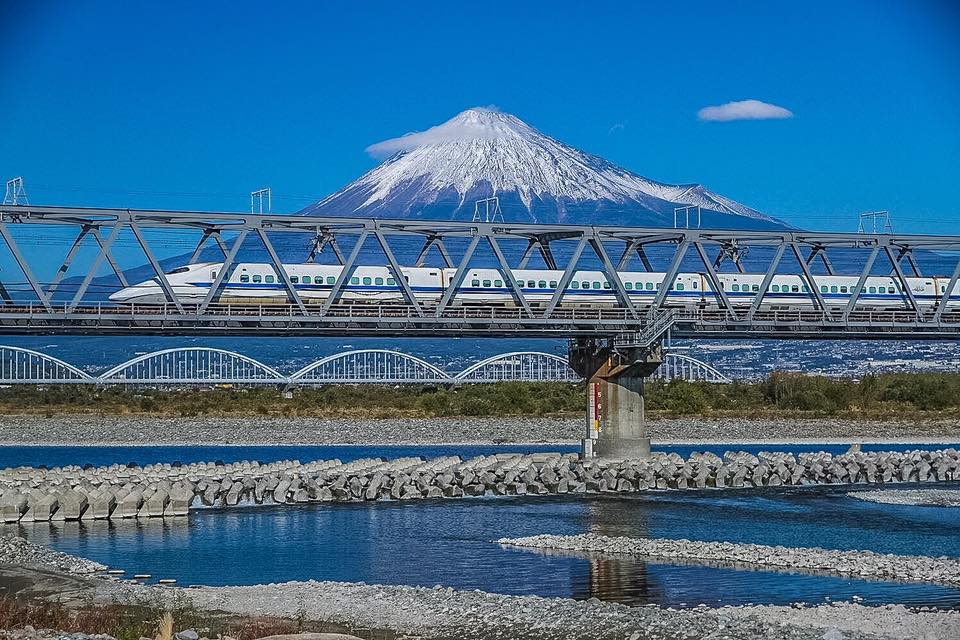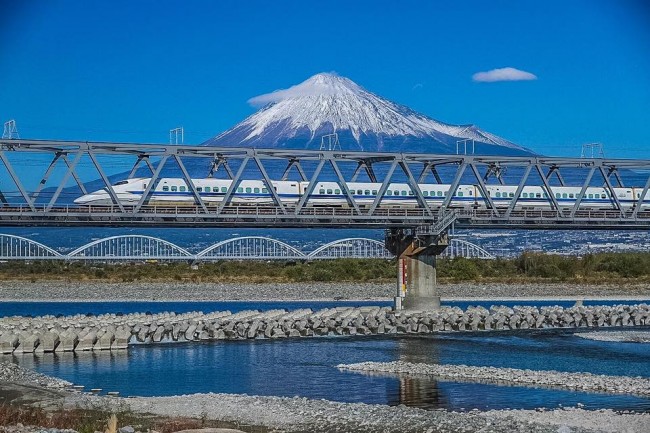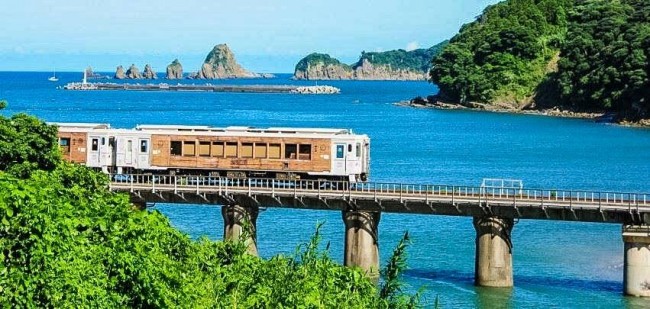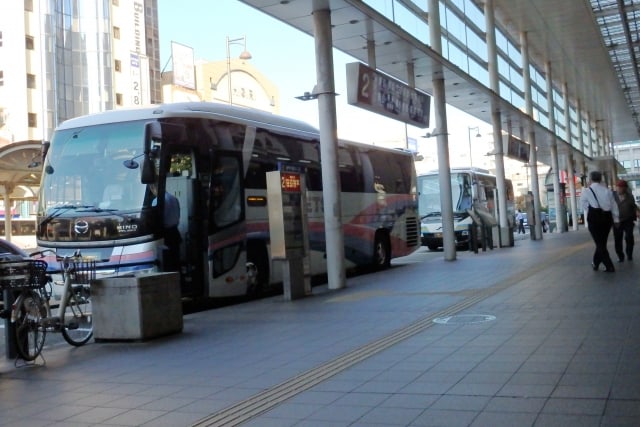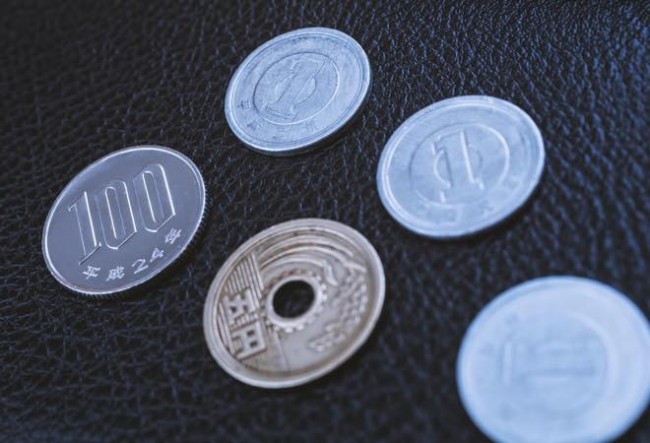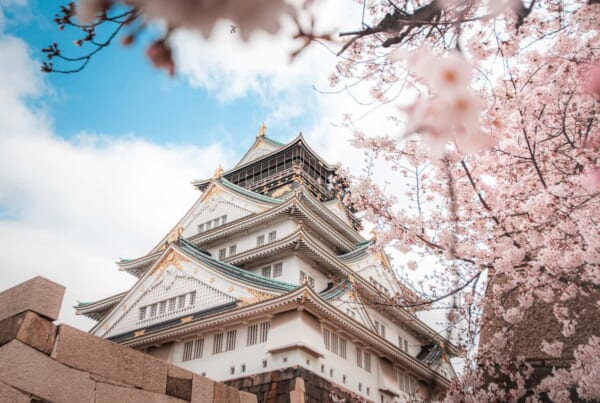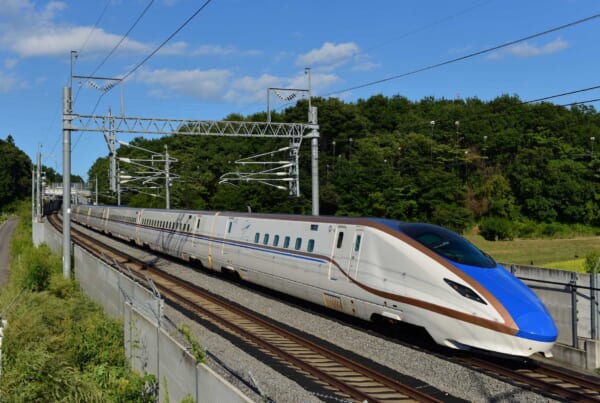Traveling can be stressful, especially when you’re worried about overspending your limit. Japan is definitely not a cheap country to visit, and is even more so if you’re planning on visiting a lot of different cities while you’re there. After living in Japan for a year, I would have to say that the thing I spent most of my money on was trains. While food and clothing are average priced (in comparison to Vancouver anyways), trains were the thing that sucked my pockets dry every month. Here are some tips on how to get around Japan without spending all your money on expensive transportation.
1. Get a JR Pass
If you’re planning on traveling to various cities in Japan, a JR Pass is something you may want to look into. These passes are offered for 7, 14, or 21 days depending on your stay, and give you a unlimited travel on any JR line within cities and most bullet trains. They also give you the option to buy a standard pass and a first-class pass, which gives you access to the luxurious reserved seat cars called “green cars” on bullet trains and select long-distance trains on the JR lines. If you decide to go with a standard pass, you will have to be careful about which trains you can and cannot take, as some may require an extra fee. While these passes give great access to many destinations for a short period of time, there are a few restrictions you should be aware of before purchasing.
First, a JR Pass must be purchased before going to Japan. After purchasing you will be given an “exchange order” which you will need to exchange for your pass at a JR Pass office within Japan. The reason for this is because the JR Pass is only available for tourists and they will check your passport to be sure you have the proper qualifications to receive it. This also means that you may need to plan your trip in advanced to see if the price is even worth it.
Another restriction to be careful of is the bullet trains. The JR pass only offers bullet train services for certain bullet trains. Mizuho and Nozomi class bullet trains ae not included in this package, and this may hinder your travel plans if the other bullet trains don’t stop where you want to go. My recommendation is to look into your destination areas to make sure the proper bullet trains even stop there to make sure the pass is worth it for you in the end. The JR Rail Pass website offers further information on the pass, as well as bullet train destination information.
In my personal opinion, a JR Pass is really only worthwhile if you’re planning on taking the bullet train a number of times. If you’re only taking it one or two times, you may want to re-think your options. Also, you can also make seat reservations for standard bullet train cars, therefore if you’re someone who can do without the luxury, it may not be something you need.
2. Night/Day buses for longer trips
If a JR Pass is out of your budget, night and day buses are the best way to go. Night buses were my go-to option for traveling. They are significantly cheaper than a bullet train, and are what their name implies – buses that take you long distances overnight. If you want to pack your schedule with various activities, a night bus may be the way to go for you, as you don’t waste a day on transportation. The only problem with the night bus is that, depending on where you are going, you get to your destination very early in the morning (I usually arrived at 6 or 7 in the morning) and a little bit sleep deprived – but hey, that’s what coffee is for right? Granted, it’s much like sleeping on a cramped airplane surrounded by a bunch of people you don’t know, but if you’re not too picky about it like me, then it’s the best option. Seats recline back much further than those on an airplane, offering more comfort. There are different styles and types of buses depending on how much you’re willing to pay. The more expensive, the more space and privacy you can get. Depending on the bus as well, there may or may not be power outlets or a washroom, though the bus makes stops along the way at designated rest stations.
If sleeping next to strangers makes you uncomfortable, a day bus may be the way to go. The problem with day buses is that the drive always felt longer to me. I’m not sure if this was because I was sleeping for most of the ride on night buses, or the fact that day buses seem to stop more often at rest stops that night buses (I’m thinking the latter). Not only did it seem to take much longer, but it felt like a waste sitting on a bus an entire day when I could be out exploring new areas, but to each their own!
I used a company called Willer Express. Their website is offered in Japanese and English, and the reservation process is fairly simple. Finding the bus stations can be a bit confusing and daunting, but the website provides maps and pictures of where you need to go. I’d strongly recommend them to anyone.
3. Never take a taxi!
The first thing I was ever warned about before I even went to Japan was how expensive it is to take a taxi around. Admittedly, when you’re stuck somewhere late at night with no way of getting home, taxis do seem like your only option to get home, but there are a few options to avoid having to pay the hefty fees of taxis.
The first piece of advice I can offer is to make sure you know the time of your last train home. If you happen to miss it, fear not, there are other options. Manga café and Internet cafés are a great place to stay overnight and are a much cheaper option. Most are open 24/7 and are fairly easy to find, depending on where you are. Manga cafés in particular offer a private cubicle for you to sleep in and offer showers for the morning after. It may feel like a bit of a waste leaving your hostel or hotel room empty for a night, but trust me, it’s worth it. This is particularly true if the place you are staying is relatively far away. If you live five to ten minutes away and are worried you might get lost trying to find your way back, taxis are probably still your best option.
I lived in a dorm outside of central Tokyo. The walk home was about a 45 minute walk, so we often would take a taxi home from the nearest station. A ten minute ride would cost us about 1200 yen. Splitting it between 4 people made it more affordable, but granted taxis outside of Central Tokyo tend to be cheaper. You can use that as perspective in order to decide if it’s worth making that trip back home. The moral of the story: if you’re trying to save money, avoid taxis whenever possible.
4. Find the cheaper train lines/take buses
Trains in Japan are not only confusing, but can be very expensive depending on which ones you take. If you decide to go with the SIM card like I recommend (see below), then finding the cheaper option is that much easier. If not, here is a simple guide to help find the cheaper trains. JR lines, the most frequently used lines around central Tokyo, are the most expensive. Taking the JR line from Shinjuku to Shibuya, 3 stops away, is going to cost you 160 yen. For close distances like that, if you’re really keen on saving money, walking is probably the better option (about a 30 minute walk).
Another option is the Tokyo Metro lines, aka the subway. These lines are the cheapest option of train lines in Tokyo and are best for longer trips. Second cheapest are the Keio and Toukyu lines. Keio is best for going to places that are not far from each other, and Toukyu is best for places that are relatively far. Of course, depending on where you are going you may not have these options and may be forced to take one of the more expensive lines. That being said, the lines specified here are all in Tokyo. If you are going to other cities, prices may vary. JR lines are present throughout the country, though my general consensus is that JR lines tend to be the more expensive option. For example, the tram in Hiroshima is much cheaper than JR, and also a much cooler experience, albeit a bit slower.
A note of caution: As mentioned above, some trains do require you to pay an extra fee. These types are generally the really fast trains that make limited stops. A hint at these trains being the more expensive ones is that the inside looks luxurious, not only on the outside but also on the inside with their big comfy seats. They will also say on the trains “rapid express”, or something of the sorts. They are also generally used for longer trips, so if you’re heading to Tokyo from Mt. Fuji, for example, you may see a train like this. If you’re ever unsure whether or not you have to pay extra, don’t be afraid to ask the staff at the station.
In some cities, such as Kyoto, buses are a much cheaper option as well, depending on where you are going in the city. Out of the 4 times I went to Kyoto, I only took the train once or twice within the city. Buses were much more convenient, cheaper, and offered the stops in English which was a great help. Buses are definitely an option to look into, but if you’re concerned about getting lost or not having enough English guidance, it may be safer to stick with trains.
Tokyo also offers bus shuttle services to and from both Narita and Haneda airport to select areas throughout Tokyo. Depending on where you are going, these may be the cheaper option to getting to your destination rather than taking trains. Tickets can be bought at the ticket counter within the airport. For shuttle buses to the airport, there are two options: Tokyo Shuttle and Access Narita. Tokyo Shuttle, you have to make a reservation online or on the phone beforehand, and costs around 900 yen. As for Access Narita, you can purchase the tickets on the bus and costs about 1000 yen. You can also reserve tickets online for Access Narita, but it does not offer English for that specific information.
5. Buy a SIM card
One last thing I want to mention as a good travel tip around Japan doesn’t necessarily have to do with cheap travel, more of a general advice to make your trip more stress-free. For those of you staying for a month or more in Japan, I strongly recommend heading to an electronic store such as Bic Camera and picking up a SIM card to use while there, if you have an unlocked phone. As someone who barely ever used google maps back in Canada, it was my saviour in Japan. Not only does it help with GPS, but it also really helps with figuring out trains/finding the cheaper train options.
You can get a SIM card for 1000 yen a month and it is worth every penny, or rather, yen! Walking around Tokyo feels like walking around a maze and having that GPS will make your life that much easier. The one problem with getting a SIM card is that many of the packages are in Japanese, however, if you have at least some knowledge of what kind of GB you want or speed of the connection, you will be able to get that information off of the package without needing knowledge of Japanese.
The packages come as paper cards, once you select the one you want, you bring it to the cashier and they will ring it in for you. Some SIM cards are given to you right on the spot (usually 1 month only SIM cards), others will be shipped to where you are staying within a day or two of having completed filling in the online form. The form is in all Japanese, and even for someone like me who had been studying Japanese nearly 3 years before going to Japan, I still had difficulty with it. If you are staying at a hotel or hostel where there staff can speak English, I’m sure they would be glad to help you fill out the form. It’s a bit of a complicated procedure, but as I said, worth every penny. When I first got to Japan, I planned to travel around for a month, and I have to say, if I didn’t have GPS I think I would have gotten lost too many times to count!
The above tips are merely things I noted on while I was in Japan. If you’re someone who isn’t afraid of a little adventure, you may even find some other options not mentioned above. For those of you, like me, who like to know as much as possible before going to a different country, I hope these tips help the make the trip more hassle-free. Enjoy your time in Japan!


